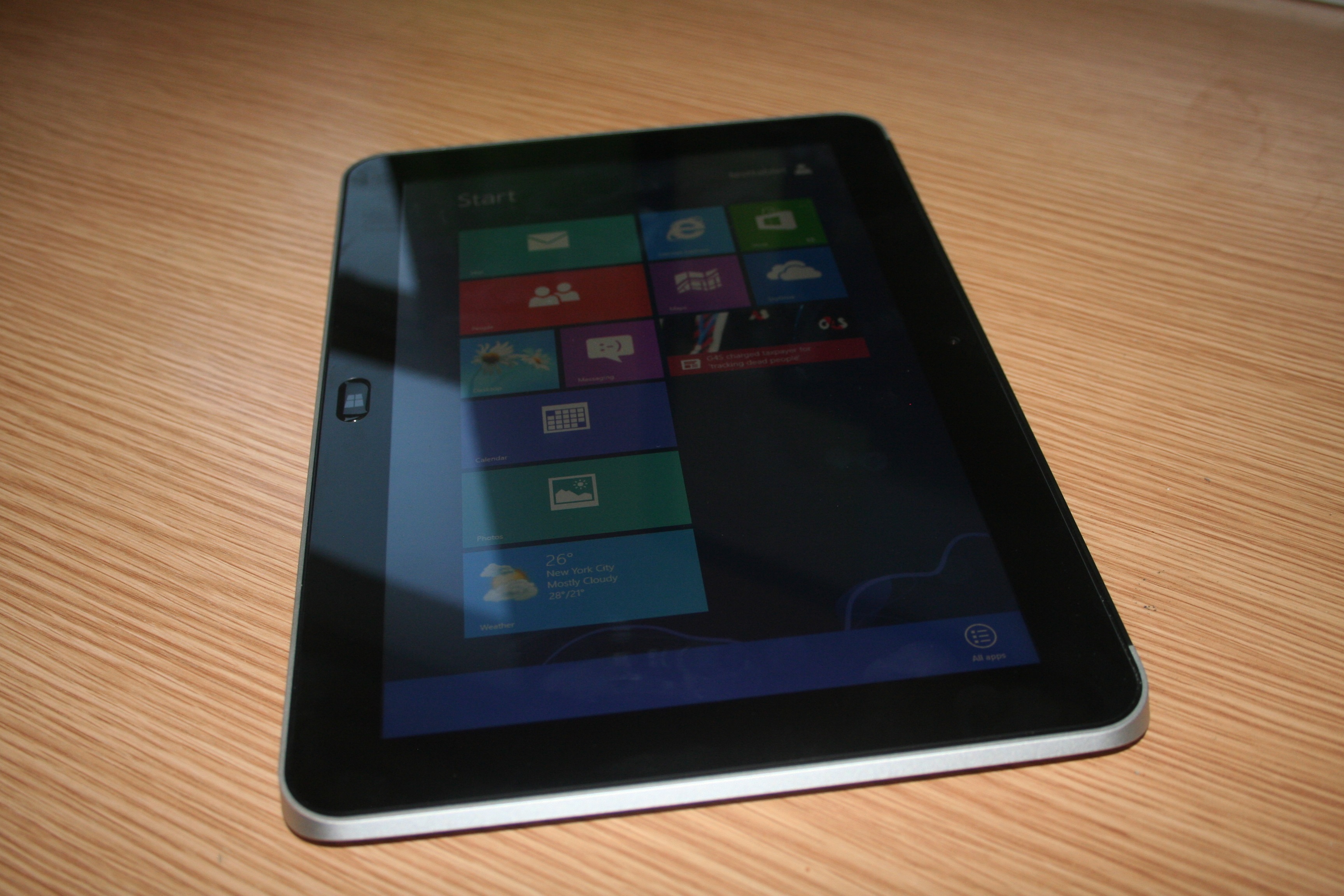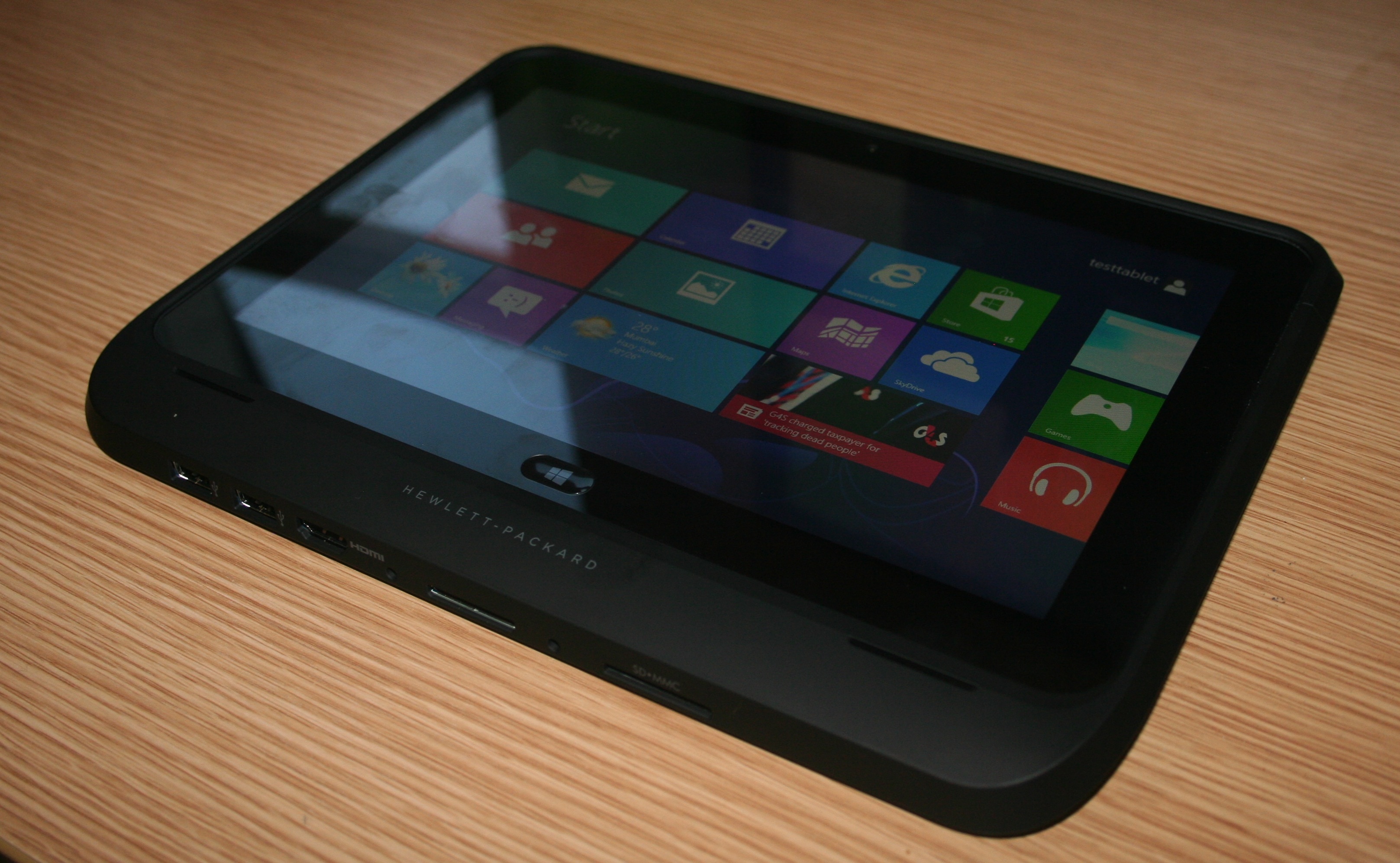HP ElitePad 900 review
Good battery life and accessories a plenty for this rugged Windows tablet, but the ElitePad 900 suffers from middling performance.

For the price, other tablets may offer more value and productivity. If your IT department insists on having a Windows 8 tablet, the Dell Latitude looks a better bet.
-
+
A well-built machine that will withstand a few knocks; IT management and security tools; Lots of accessories
-
-
Modest performance from Atom chip and 32-bit software; Lack of ports without accessories; High price

HP's ElitePad 900 aims to catch the eyes of CIOs and IT managers looking to deploy a tablet that can be managed as easily as a PC. The Windows 8 device also sets out to offer end-users a robust chassis sits in-between the ruggedised Panasonic ToughPad and the delicate iPad.
Not so pleased would be the road warriors who have to use it though. Its performance doesn't quite match that of an iPad or one of the multiple high-end Android devices available.
Starting at 547, the ElitePad 900 sports an Intel Atom processor at its heart. While this means you get the full-strength Windows operating system running atop of it (rather than the lack-lustre Windows RT an OS only Microsoft could love), the Atom chip means that performance is that of a netbook sans keyboard.
The 1.8GHz Intel Atom Z2760 processor is supported by 2GB of RAM and up to 64GB of storage in the form of an SSD. Our test model had 64GB, which it needs as the OS appears to take up a lot of space. HP has also included features such as BIOS Protection and LANDesk to make it attractive for enterprise deployment.
Design and Ports
Externally, the styling is iPad-like with brushed aluminium and a black bezel around the screen but with added black plastic to ensure enough clear water between the two design-wise. There are volume buttons and a rotational lock and display lock. At 261 x 178 x 9.2mm the tablet is not as wide as the full-sized iPad but a tad longer. There is no questioning that the tablet feels sturdy enough for most business uses.
On its own, the ElitePad 900 has little in the way of I/O ports. There is simply a docking connector, reminiscent of the old-style iPad and iPod connectors, and a headphone jack. Hidden away under a tiny pin-open panel are also a micro SD card slot and SIM card slot for mobile broadband. The SD card slot will be needed to ensure for future storage needs given have much space is taken up with the OS.

The ElitePad is usable with one hand but you'll feel the weight of the 680g chassis after long periods, more so when teamed with the expansion jacket and its extra battery. The build quality is stand-out. The brushed aluminium and Gorilla Glass looks the part business-wise. The display delivers a resolution of 1280 x 800 pixels, lower than a lot of other Windows tablets and far below the 2048 x 1536 of the latest Apple iPad Retina display. The resolution is below the minimum required for Windows 8's Snap feature, so running two Metro apps at the same time appears to be out of the question.

Optional expansion comes in the form of a set of "jackets". There is an Expansion Jacket that comes with HDMI and USB ports, plus room for an extra battery, and a docking station, sporting multiple video and data ports. In time this will be added to with what HP calls a "Productivity Jacket" which is a keyboard case with adjustable screen angles.
Get the ITPro daily newsletter
Sign up today and you will receive a free copy of our Future Focus 2025 report - the leading guidance on AI, cybersecurity and other IT challenges as per 700+ senior executives
Rene Millman is a freelance writer and broadcaster who covers cybersecurity, AI, IoT, and the cloud. He also works as a contributing analyst at GigaOm and has previously worked as an analyst for Gartner covering the infrastructure market. He has made numerous television appearances to give his views and expertise on technology trends and companies that affect and shape our lives. You can follow Rene Millman on Twitter.
-
 Cleo attack victim list grows as Hertz confirms customer data stolen – and security experts say it won't be the last
Cleo attack victim list grows as Hertz confirms customer data stolen – and security experts say it won't be the lastNews Hertz has confirmed it suffered a data breach as a result of the Cleo zero-day vulnerability in late 2024, with the car rental giant warning that customer data was stolen.
By Ross Kelly Published
-
 Women show more team spirit when it comes to cybersecurity, yet they're still missing out on opportunities
Women show more team spirit when it comes to cybersecurity, yet they're still missing out on opportunitiesNews While they're more likely to believe that responsibility should be shared, women are less likely to get the necessary training
By Emma Woollacott Published
-
 OpenAI wants developers using its new GPT-4.1 models – but how do they compare to Claude and Gemini on coding tasks?
OpenAI wants developers using its new GPT-4.1 models – but how do they compare to Claude and Gemini on coding tasks?News OpenAI says its GPT-4.1 model family offers sizable improvements for coding, but tests show competitors still outperform it in key areas.
By Ross Kelly Published